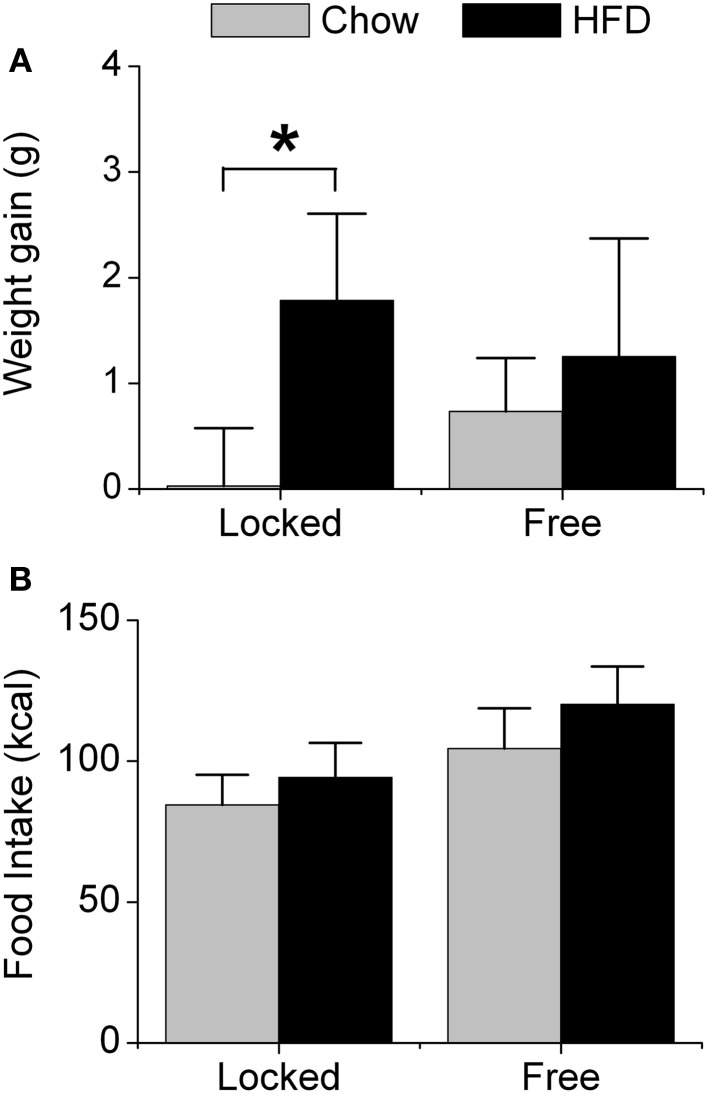Figure 1.
Acute effect of wheel-running activity on body weight and food intake. Male heterozygous PER2::LUC mice were single-housed at 7 weeks old in cages with either locked or freely rotating running wheels and provided with chow ad libitum for 1 week. At 8 weeks old, mice were provided with fresh chow (gray) or high-fat diet (HFD; black) for 1 week. The mean (±SD) weight gain (A; grams) and food intake (B; kcal metabolizable energy) were determined during 1 week of chow or HFD feeding. There was a main effect of diet [F(1, 32) = 14.93, p < 0.001] and a significant interaction between wheel and diet [F(1, 32) = 4.39, p = 0.04] on body weight gain. Mice with locked wheels consuming HFD gained more weight than chow-fed mice (*p < 0.001). There were significant main effects of wheel [F(1, 32) = 27.15, p < 0.001] and diet [F(1, 32) = 8.28, p < 0.01] on food intake. Locked/chow n = 7; Locked/HFD n = 12; Free/chow n = 6; Free/HFD n = 11.

